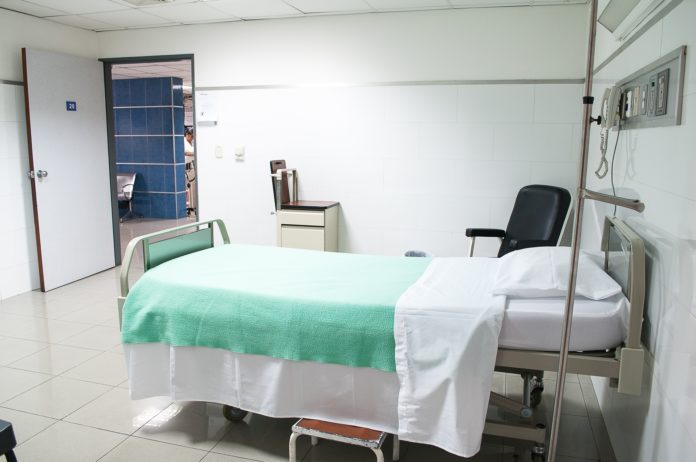
Following a Colorado Supreme Court ruling in May 2022 tossing out a six-figure hospital bill, lawmakers and the public alike seem to be eyeing the profit margins and pricing of hospitals more closely. Lawmakers narrowly passed a hospital pricing transparency bill that same month just a day before the end of the session. The Colorado Department of Health Care Policy & Financing on Jan. 18 released three hospital transparency reports covering fiscal years 2014-21.
According to a release from HCPF, hospitals represent the largest component of the health care dollar. HCPF added the reports identify opportunities to greatly improve community impact from the $965 million in community investments that Colorado’s not-for-profit hospitals make in lieu of paying taxes. The reports note Colorado hospital profits, reserves (days cash on hand), the impact of the $1.2 billion in federal stimulus received in 2020, the gap between rural, independent, and mega-system financials and more.
According to HCPF, new analyses of Colorado hospital costs, prices and profits show overall hospital patient revenues have grown faster than operating expenses, leading to growing profits and margins. Specifically, HCPF reported that from 2018 through 2020, Colorado hospitals were ranked in the top 10 nationally for each of the costs, prices and profits metrics tracked in the reports.
HCPF explained the report shows specific hospitals could do more to reduce prices. This total profit margin is buoyed by specific hospitals within Colorado’s larger systems, HCPF noted in its release. For example, UCHealth had a total profit margin of 26.1% and a patient services margin of 8.5% in 2021. HealthONE, a Colorado for-profit hospital, reported 18.6% total margins (20.8% patient margins). HCPF said both of these systems could cut prices significantly and still thrive financially.
HCPF noted other examples from the report in its announcement, including:
- Part of UCHealth, University of Colorado Hospital’s 2021 patient profit margin was 11.4% and the total profit margin was 31.3%
- Also part of UCHealth, Poudre Valley Hospital’s 2021 patient profit margin was 13.5% and the total margin was 45.1%
- Centura-CommonSpirit’s 2021 patient profit margin was 11.5% and the total profit margin was 14.8%
- Part of Centura-CommonSpirit, St. Anthony Summit’s 2021 patient profit margin was 31.7% and the total profit margin was 34.5%
Comparatively, HCPF noted Intermountain Healthcare’s (formerly SCL Health) patient profit margin was 0.9% and the total profit margin was 5.2% while St. Mary’s Hospital & Medical Center’s (part of Intermountain Healthcare) patient profit margin was 7.3% and the total profit margin was 12.9%.
HCPF said in its announcement the Hospital Expenditure Report analyzes major hospital financial metrics such as patient revenue, uncompensated care and operating expenses over fiscal 2014-21. The report shows Colorado hospitals saw historic growth in net patient revenues, which grew $1.105 billion, an average of 7.3% each year, between 2014 and 2021. Between 2020 and 2021, patient revenues increased 10.2% or $1.831 billion, not including the $1.2 billion in federal stimulus Colorado hospitals received throughout the COVID-19 pandemic.
Despite the historic impacts of COVID-19 on Colorado hospitals, their patient revenues have continued to rise, HCPF said in its announcement. During the same time period, Colorado hospitals’ operating expenses grew less than in any year since 2015 — an indication hospital patient revenues are returning to trends seen prior to the pandemic, according to HCPF’s release.
Hospital mergers and acquisitions over the last decade have generated ‘mega-systems’ across Colorado. These systems have amassed billions in reserves — the result of higher than necessary prices paid by patients and employers year over year, according to HCPF’s release. HCPF said the report shows that for many hospitals, reserves are generating profits equal to or greater than patient service margins.
HCPF noted the reports show the $1.2 billion in federal stimulus paid to hospitals in 2020 more than offset the reduction in profits the hospitals would have reported, helping hospitals avoid dipping into reserves in 2020. It also shows a 2021 bounce back of profits, according to HCPF’s release, despite the increases in 2021 contracted labor expenses, which grew by 115%.
The reports also illustrate a stark contrast between the financial performance of Colorado’s large hospital systems to many rural and independent hospitals, and the state’s primary safety-net hospital system, Denver Health, which have persistently struggled financially.
“Since 2020, hospitals have played an important role navigating the COVID-19 pandemic, patient surges, revenue volatility, unprecedented contract labor rates, and lower investment returns. That said, these reports clearly illustrate that our larger hospital systems are still sitting on huge reserves despite this unprecedented chapter,” said Kim Bimestefer, executive director of HCPF in a press release. “Improvements in policy are needed to ensure hospitals are prioritizing affordability initiatives and how they channel community investments to better meet the needs of the communities they serve.”
“At the same time,” Bimestefer continued, “our smaller rural hospitals and Denver Health – our safety-net hospital – need transformative policy and investment to overcome mounting headwinds.”
While Colorado’s large nonprofit hospital systems enjoy larger profits and have accumulated reserves, they don’t pay taxes, HCPF noted. For this tax exemption benefit, hospitals are expected to make community investments. The 2022 Colorado Hospital Community Benefit Annual Report found Colorado communities want hospitals to invest in behavioral health services, HCPF said in its announcement. But, HCPF added hospitals’ reported information lacked sufficient detail to understand exactly how community investment funds are being spent and whether the hospital community benefit investments decisions match the needs identified by their communities.
HCPF noted in its release some hospitals, including UCHealth and Children’s Hospital Colorado, report spending nearly half of their community investments on their own research and health professional education expenses.
“Families and local businesses need to have a stronger, more impactful voice in how their hospital’s community investment dollars are spent,” said Adela Flores-Brennan, HCPF’s Medicaid director in a press release. “It is time we held not-for-profit hospitals accountable for meeting the needs of the communities they are in business to serve.”

